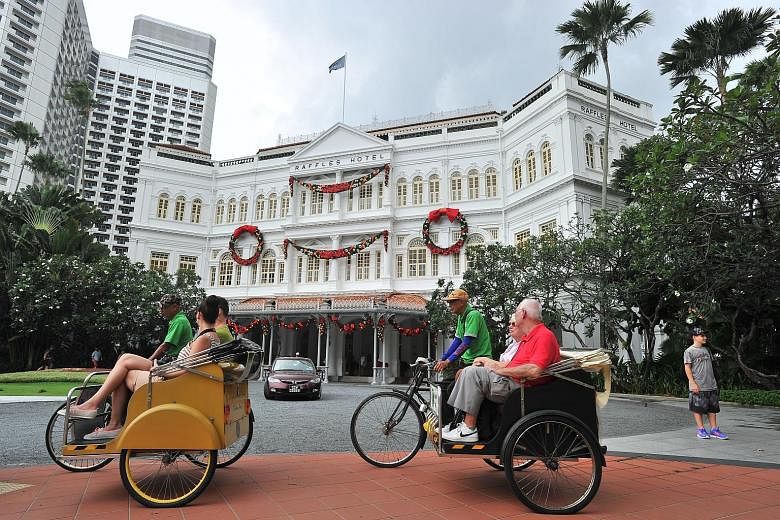Singapore still needs a "significant" number of hotel rooms despite a substantial increase in the last three years, said real estate agency Colliers International.
The reason is that tourist arrivals are forecast to hit a new record this year, rising around 4 per cent to 18.1 million, according to the Singapore Tourism Board (STB).
Colliers, however, noted that the supply of hotel rooms will slow to 628 this year and 1,300 next year.
This could dampen the growth of visitors to Singapore, especially at the mid-to-lower end of the market, said Colliers executive director of valuation and advisory for Asia Govinda Singh yesterday.
It could be an "opportune" time to reconsider more development and investment in the hotel sector, he added.
Tourism is a leading sector in the Singapore economy and STB forecasts that tourism receipts this year will range between $27.1 billion and $27.6 billion.
The supply of hotel rooms has been rising since 2015, when more than 5,500 were added. In 2016, there was another 2,567 new rooms, and last year, there was an additional 3,400.
With a record 17.4 million visitors arriving on Singapore shores last year, the average hotel occupancy rate was more than 84 per cent, a figure Colliers expects to remain unchanged this year as a result of the slowdown in supply of new rooms.
It noted that hotels are almost full all the time during peak periods, and especially from Monday to Thursday, and on Saturday nights.
"Our hotel needs analysis showed that the number of overnight visitors to Singapore has consistently outstripped hotel room stock since 2011, and is projected to remain so over the next few years," said Mr Singh.
"It suggests that there is a high degree of existing frustrated and latent demand, whereby visitors who wish to come to Singapore either cannot find rooms or have to turn to alternative accommodation providers such as serviced apartments or, dare I say, Airbnb."
Hoteliers in Singapore should see an improvement in the average daily rate going forward, Colliers said, with the increase in room supply not expected to be significant as long as regional currencies remain relatively weak.
Chinese tourists are expected to continue to drive visitor arrivals, as outbound trips from China are projected to jump by 47.7 per cent, from 120.1 million in 2015 to 177.4 million in 2020.
China, Indonesia and India are the top three visitor arrival markets for Singapore in that order, with India showing the highest growth rate, according to the STB.
The fractious political climate between the United States and China could weigh on business and consumer confidence, but Mr Singh said intra-Asia travel and the growing domestic markets in several larger destinations across Asia are likely to continue to underpin demand.
Across the Asia-Pacific, room occupancy levels for hotels have crept up by 1.5 per cent year-to-date in February, against the same period a year ago. The average daily rate, however, fell 4.5 per cent.

